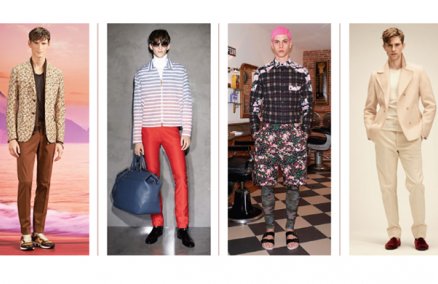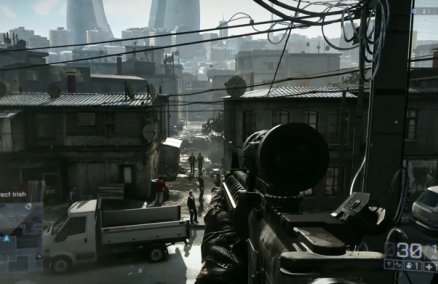As our society becomes more affluent and cosmopolitan, there is a palpable sense of growing consciousness in terms of design, culture and arts in the local creative circle. Does it really herald a coming of age for the scene or is it merely a passing fad for our fickle trend-spotting posse? Despite the pessimistic mainstream press reports about the underwhelming attendance at the recent Singapore Biennale, our calendar is loaded with arts and cultural events all year round.
According to the National Arts Council Singapore’s (NAC) Cultural Statistics from 2003-2009, there are more than 80 events taking place in the city on a daily basis. But does a packed calendar really mean quality productions, events and activities?
We decided it was time to take a closer look, to talk to some experts and come up with our own plan for taking things forward.
The Arts Blueprint
In his Budget 2011 speech, Finance Minister Tharman Shanmugaratnam mentioned that over the next five years, spending on arts and culture will average $365 million per year. This is a whopping 50 per cent increase from the current level. These changes have been largely attributed to the burgeoning international interest in arts and cultural events like Art Stage, The Affordable Art Fair, Singapore Biennale, Mosaic Music Festival and Singapore Arts Festival.
From the new budget, the Ministry of Information, Communication and the Arts (MICA) plans to pump about $80 million into new initiatives for cultural development under the Arts and Culture Strategic Review Steering Committee (ACSR) annually through 2025. Formed in September 2010, the ACSR comprises 70 members from the private and public sectors, including practitioners from the arts and creative industries. The ACSR’s proposal to create a vibrant local arts scene is a three-pronged plan: “Arts and culture for everyone, everyday,” “Arts and culture everywhere” and “Building capabilities and raising new peaks of excellence.” But local arts practitioners feel that this preliminary proposal is too broad, and there are problems on the ground that need to be addressed first.
In land-scarce Singapore, affordable studio space and housing has always been a major concern for the local arts and culture communities. Currently local artists, including Cultural Medallion winners like Lee Wen, have difficulty finding conducive working environments. A significant portion of the budget should therefore be used to procure proper housing for and work spaces for these and future artists.
“This is definitely not the responsibility of any one organization, but a collective consciousness on the value of art, and importantly the value of the artist as the key producer of art and the studio as the birthplace of art in society,” says Substation’s artistic director Noor Effendy Ibrahim. “If we as a society do not have that collective consciousness, then it will be impossible—or at the very least cause the objectives to be severely flawed—to protect affordable spaces for the processes of artistic creations. Shouldn't we look at this in the same way we think of affordable housing for all Singaporeans?”
Another key body in that process is The Urban Redevelopment Authority (URA), which provides incentives to privately-run commercial developers to incorporate more arts and cultural elements into their developments in the city area. Joining the 5,600 sq. ft. ION Art Gallery is the beautifully restored Capitol Theatre, which will provide artist-in-residence facilities for theater companies.
Developments like these are essential for the bourgeoning arts scene; artists can focus on honing their works in a suitable environment (the romanticized ideal of being a struggling, poor young artist to create your best early works is certainly something that is lost in our hospitable climate).
Given the growing importance of the arts and creative industries in the past decade, there is also a pressing need to nurture the professional development of artists, administrators, technical personnel and support staff; something that's currently missing in a terrain dominated by numerous organizations and companies, which are usually small-scale and lack the resources to support staff development. Many would-be artists are freelancers who do not receive regular CPF contributions or earn a regular income, thus affecting their career path, often for the worse.
Fine arts graduate Khalid Abdullah, 29, ended up joining the offshore marine engineering industry a couple of years ago. “Being a practicing artist has always been an uphill struggle,” he says. “I love it and will probably pursue my projects when I retire, but at the moment my job in the offshore industry helps me to make a more lucrative and sustainable living for a brighter future.”
Providing working space and support for our current crop of artists is one thing, but to sustain our creative arts industry we certainly need a more focused and inter-disciplinary strategy aimed at nurturing artists and audiences from a young age.
Audrey Wong, Nominated Member of Parliament, lecturer at LaSalle College of the Arts and key member of the ACSR says, “These programs should go beyond mere ‘exposure’ programs to broader, cross-disciplinary approaches that enable students and the public to see arts and culture as part of a greater whole—this could mean equipping arts-in-education and community arts practitioners with the knowledge of best practices and skills, as well as the development of more sophisticated educational programs combined with other subject domains like physics, chemistry or geography.”
Veteran theater director Alvin Tan from The Necessary Stage adds that “It would be sensible if more money goes into Research and Development (R&D). As an industry, R&D is essential for the production of new works. This is a laborious process which involves time, effort, funds and resources. With added funding, we can pay for more cutting-edge works, less run-of-the-mill productions and even commercial failures.” So we say "Enough!" to commercially driven plays that are more about putting bums on seats; or worse, passing off tired old Chinese opera, as the best we have to offer to the international arts world. It’s about time we reconsider the global image that we want to project.
Alvin Tan shares this sentiment, “Singapore Tourism Board-endorsed art festivals in foreign cities like London and Beijing, are a joke because the program is largely traditional arts-based events that exotic-ize Asia and do not engage and challenge the audience. The world doesn’t know of a more diverse and pluralistic Singapore that has works that challenge the status quo and provoke intellectual curiosity. I am quite sure that an international audience can learn more from our plays which are truer reflection of what really happens in our society.”
The Design Blueprint
The Design Singapore Council (DSC), formed in August 2003, is the national agency that aims to develop Singapore into a global city for design.
Among its major projects in recent years is the DesignSingapore Initiative Phase 2 (Dsg- II), a blueprint stretched over 2009-2015 to foster creativity and innovation and sharpen our competitive edge, with a budget of $55 million.
Djohan Johari, a graphic designer, cautions, “Although money would definitely facilitate the growth of the arts and design community in terms of the liberty to experiment with various mediums, it should never be the core of progress. For a lack of a better analogy, there's no way Manchester City, with all their money, could play football as beautiful as Barcelona, by just pumping money into the equation. The process and the chemistry involved would take precedence over financial input in producing articulate art and creative solutions.”
But boy has the design sector grown. If the 7.5 percent annual revenue growth is maintained, the design sector is estimated to contribute about $4.6 billion to Singapore’s GDP in 2015.
And they mean serious business in the international sphere, which is reflected by the spate of Design Memoranda of Understandings (MOU) signed with design-centric nations like Denmark and Korea in recent years.
With the added international chutzpah and know-how from these mutual exchanges, it will certainly help us improve on our position of 16 in the top 50 list of Design Competitiveness Ranking in 2005.

But league tables are not everything. Johari says, “I think the Singapore design community has grown tremendously and it still is growing as we speak. I'm not too sure if we've reached an ideal state and if we should even consider having an end goal because design is as much about the process as much it is about the final product or solution. It is dangerous and foolhardy to quantify everything in numbers or rankings.”
Certainly, the scene has seen quite a few hits and misses (remember the mammoth failure of the Singapore Design Festival in 2009?), even if it has matured tremendously. While more schemes and grants have been made available to designers over the years (such as the Overseas Promotion Partnership Programme Scholarship, Overseas Development Grant and Professional Development Grant), there is still too much red tape in doling these out. :Phunk Studio’s Alvin Tan testifies, “The schemes are good for certain things like a fashion brand, a season of clothes, furthering education for the best students and studio-based projects. But most of the schemes have stringent criteria, are not flexible and I hope that they will be further developed, improved and should be more expansive in the near future.”
The DSC itself is less forthcoming on the subject of what effect it is having, and when asked when it thinks we will come of age as a design destination, simply says this is a question "best judged by the public."
But, all things considered, with the National Design Centre slated to open in 2013, our design scene looks like it’s heading in the right direction.
The Fashion Blueprint
On the surface, the local fashion scene seems to be thriving more than ever: New local brands continue to emerge out of the woodwork, with the support of numerous standalone boutiques as well as collective efforts like the Parco next NEXT initiative, all which act as counter sales points to potential local buyers. Add to that the fact that we are the only Southeast Asian city with three major fashion festivals in a year—Men’s Fashion Week in March, Asia Fashion Exchange (AFX) in May, and the upcoming Women’s Fashion Week in October.
And we’re not even taking into account the countless private and self-sustainable showcases that are held throughout the year by independent local labels. Never mind the fact that there isn’t one government organization to hold the industry together like we have for the arts and design (well, there is the Textile and Fashion Federation (TaFf), a coalition of textile and garment associations, but it has since shifted its focus from manufacturing to regional marketing efforts); our local fashion industry seems self-sufficiently well-oiled.
The cool fashion festivals for example, which cost between $1-3 million to stage, are funded mostly through private sponsorships with the support of the Singapore Tourism Board and Spring Singapore. Not just a platform for international labels, these festivals also act as a conduit for local designers to show and sell.
But underneath all that sheen and glamour, local fashion designers will have you know that there are still quite a few problems at hand within the industry that need addressing. The fact that Singapore still lacks a sustainable manufacturing industry means that most brands have to venture overseas to make their clothes.

“Manufacturing is tricky and next to impossible here,” says Sifr’s Suraj Melwani, who manufactures his clothes in Indonesia where factories will accept small-scale jobs. “Piecing together so many different things is tough. We don't have access to fabrics and trims and garment washing companies, you can't swatch here, and not many sellers will provide us fabric by the roll or even, three rolls. If they do, they will charge you retail prices. Also, making patterns is far too costly considering they always have to be changed.” Our local designers do hope to see more opportunities for them to produce their creations at home as close proximity enables them to exercise more control over their work. After all, a fashion presentation is only as good as the clothes it shows.
Veteran designer Wykidd Song also feels that the local fashion scene needs to be pushed from the ground up; from the early stages of fashion education, and not as the rah-rah showcase that it is now where glamour takes precedence over real substance. “One of the most important points is pushing up the ante—starting from the schools, creating a competitive edge between students from all our design schools,” he says. “Currently, they don’t compete and are in their own world; our design schools just don’t push them enough. We should model ourselves after the London Graduate week, a great competition from the graduates of all the different institutions, and a few graduates from each cohort are bestowed with honors in the various departments like menswear, womenswear and kidswear to further hone their craft.”
But one of the biggest problems, some designers feel, is TaFf itself, which has somehow lost its focus over the years, concentrating on regional marketing efforts rather than developing the scene from home ground. Design competitions like Star Creation under TaFf may be noble efforts to boost the confidence of young emerging local designers, but are short-lived and do not sustain the scene in the long run. Sifr’s Melwani adds, “TAFf should hold more talks, guidance workshops, open up an online forum or start an open house where they can bring together all the different participants in the local industry like manufacturers and fabric suppliers. Opening up an online forum and other forms of social media engagement will be great tools for folks in the industry to work and collaborate together and understand what’s really happening in the scene. People will get involved this way.”
Still, there are those like Tjin Lee, festival director of Audi Fashion festival, part of the AFX, who believe that our central location, infrastructure and business nous will eventually help us stamp our mark in the rag trade.
Lee says, “Once we create a buzz for local and Asian designers, and once these names make it on the regional and international levels, Singapore will quickly become the place to go for anyone who wants to tap into Asian fashion and all its aspects—from design to trade and retail. With the world's top fashion influencers coming to Asia, this can only translate into bigger and better things—definitely huge exposure—for local and Asian designers in Singapore.
It is a gradual process which will not happen overnight. But I am confident that it will happen.”


























